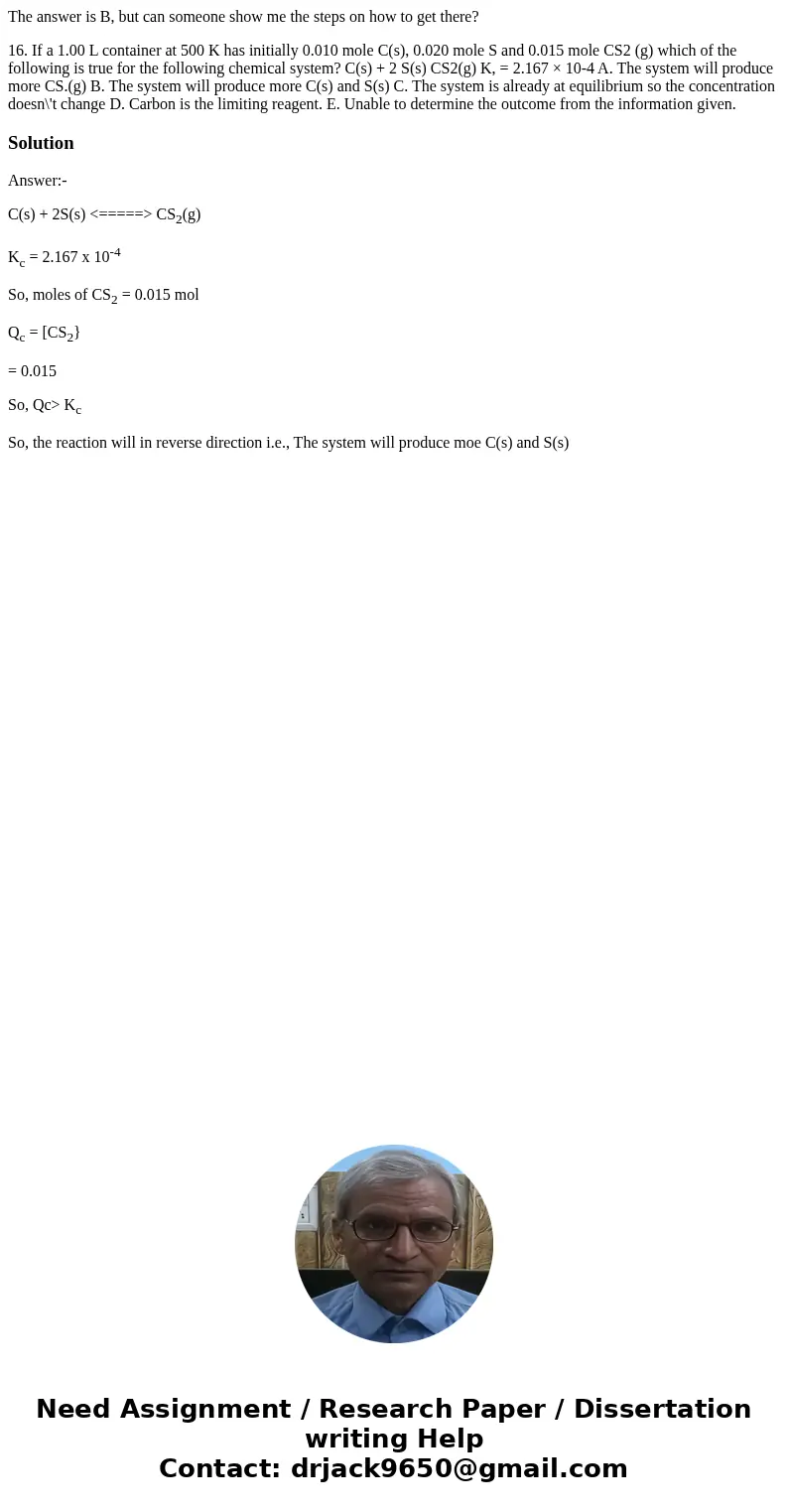The answer is B but can someone show me the steps on how to
The answer is B, but can someone show me the steps on how to get there?
16. If a 1.00 L container at 500 K has initially 0.010 mole C(s), 0.020 mole S and 0.015 mole CS2 (g) which of the following is true for the following chemical system? C(s) + 2 S(s) CS2(g) K, = 2.167 × 10-4 A. The system will produce more CS.(g) B. The system will produce more C(s) and S(s) C. The system is already at equilibrium so the concentration doesn\'t change D. Carbon is the limiting reagent. E. Unable to determine the outcome from the information given.Solution
Answer:-
C(s) + 2S(s) <=====> CS2(g)
Kc = 2.167 x 10-4
So, moles of CS2 = 0.015 mol
Qc = [CS2}
= 0.015
So, Qc> Kc
So, the reaction will in reverse direction i.e., The system will produce moe C(s) and S(s)

 Homework Sourse
Homework Sourse